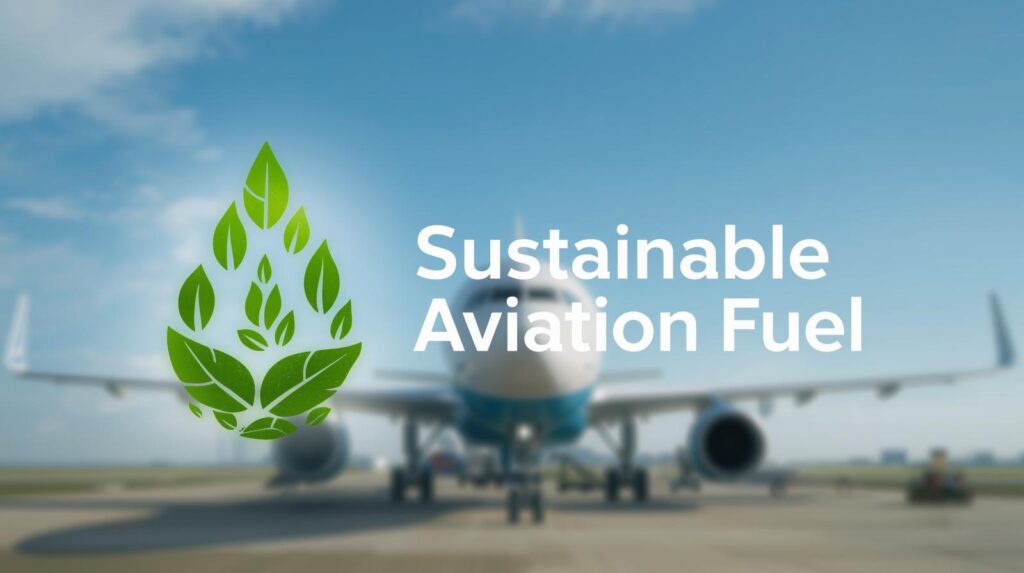The aviation industry stands at a turning point. With global air travel demand rising and carbon reduction deadlines approaching fast, Sustainable Aviation Fuel (SAF) has emerged as the sector’s most practical pathway to achieving net-zero emissions by 2050. Also known as renewable jet fuel or low-carbon jet fuel, SAF can reduce lifecycle emissions by up to 80% compared to conventional jet fuel—a game-changing advantage when compared with unproven alternatives like hydrogen or electric aircraft that demand radical infrastructure and aircraft redesign.

Download PDF Brochure @ https://www.marketsandmarkets.com/pdfdownloadNew.asp?id=70301163
Regulatory Push: Net-Zero Targets and Government Incentives
The rise of SAF isn’t accidental—it is fueled by policy frameworks, incentives, and mandates across regions. Governments, regulators, and investors are intensifying pressure on airlines to scale beyond pilot programs into mass adoption.
- European Union: Introduced binding blending mandates under the “ReFuelEU Aviation” initiative.
- United States: SAF Grand Challenge aims to supply 3 billion gallons annually by 2030.
- Asia-Pacific: Countries like Japan, Singapore, and India are building national roadmaps for green aviation.
This mix of policy backing and financial support ensures that SAF will not remain optional but a mandated cornerstone of global aviation’s decarbonization journey.
Aviation Carbon Footprint Reduction: Scenarios to 2040
SAF is expected to be the primary enabler of carbon reductions over the next two decades. Airlines today use SAF at less than 1% of global jet fuel demand, but this figure is forecast to climb to double-digit blends by the late 2030s, largely due to regional mandates and voluntary industry commitments.
Four emission-control pathways will shape this shift:
- Short term (2025–2030): SAF blending targets of 2–5% across leading markets.
- Medium term (2030–2035): Wider adoption with 10–20% blends in North America and Europe.
- Long term (2035–2040): Double-digit blending globally as infrastructure matures.
- Beyond 2040: SAF expected to remain dominant, alongside next-gen fuels like hydrogen and e-fuels.
Infrastructure and Supply Chain Hurdles
Scaling SAF production is one challenge—but ensuring distribution across thousands of airports worldwide is another. SAF must be produced, transported, and blended seamlessly within existing supply chains.
- Pipelines and trucks will account for nearly 70% of SAF distribution globally by 2040.
- Multimodal logistics networks—including pipelines, shipping routes, and road transport—are being developed to standardize quality and ensure global reach.
- Blending infrastructure upgrades at refineries and airports will be key to rapid scale-up.
This supply chain transformation will require unprecedented collaboration between refiners, fuel distributors, and airport authorities.
SAF Technology Breakthroughs
Several conversion pathways are maturing simultaneously, diversifying the SAF production base:
- HEFA (Hydroprocessed Esters and Fatty Acids): The most commercially advanced pathway, leveraging waste oils and fats.
- Fischer-Tropsch (FT): Converts biomass and municipal waste into synthetic kerosene.
- Alcohol-to-Jet (ATJ): Converts ethanol or other alcohols into jet fuel; particularly attractive due to feedstock flexibility.
- Power-to-Liquid (PtL): Synthetic e-fuels derived from captured CO₂ and renewable electricity.
By 2050, SAF production through these pathways is expected to contribute 60–65% of aviation’s total emission reductions, making it the largest single lever for industry decarbonization.
Global and Regional Outlook
MarketsandMarkets projects the Sustainable Aviation Fuel Market to grow from USD 2.06 billion in 2025 to USD 25.62 billion by 2030, at a 65.5% CAGR. In volume terms, demand will rise from 0.30 billion gallons to 3.68 billion gallons in the same period.
- North America: Expected to hold a leading 40% market share by 2025, driven by U.S. policy support and large-scale refinery projects.
- Europe: Aggressive mandates under EU climate policy are accelerating growth.
- Asia-Pacific: Emerging economies are expanding SAF adoption to meet fast-growing passenger traffic.
- Middle East: Aviation hubs like UAE and Qatar are investing in SAF infrastructure to complement their energy transition strategies.
What’s Holding SAF Back?
Despite rapid momentum, SAF faces several challenges:
- Feedstock availability: Waste oils, fats, residues, and algae are promising but limited.
- Cost barrier: SAF remains 3–5 times more expensive than fossil jet fuel.
- Partnership dependency: Airlines must secure long-term offtake agreements with producers to stabilize demand.
- Infrastructure readiness: Scaling production requires coordinated global logistics and blending standards.
These hurdles will define the pace of SAF commercialization, but steady investments and regulatory enforcement are expected to narrow the gaps by 2030.
The Road Ahead: SAF as the Aviation Industry’s Critical Pillar
While no single solution can decarbonize aviation completely, SAF stands out as the most practical and immediate alternative to fossil-based jet fuels. Unlike hydrogen or battery-electric aircraft, SAF integrates seamlessly with today’s aviation engines and infrastructure, making it scalable, reliable, and performance-ready.
- Biojet fuel, Alcohol-to-Jet (ATJ), Fischer-Tropsch fuels, and Power-to-Liquid fuels will dominate the next decades.
- SAF adoption ensures airlines can cut emissions significantly while avoiding disruptive technological overhauls.
- By 2050, SAF will remain central to aviation’s journey to net-zero—backed by governments, investors, and global aviation leaders.
The sustainable aviation fuel market is not just a growth story, it is the backbone of aviation’s climate transition. With supportive policies, expanding production technologies, and rising demand, SAF is set to reshape the skies into a cleaner, greener future.